On July 29, 1565, Mary, Queen of Scots married her second husband Henry Stuart, Lord Darnley. Henry Stuart was the grandson of Margaret Tudor, Queen of Scotland, just like his new bride and it helped make James VI’s claim to the Scottish throne much stronger. This wasn’t the first time that Mary had married and it wouldn’t be her last. It wasn’t a marriage that her cousin, Elizabeth I, approved of either.

The Joining of Cousins: Mary, Queen of Scots Marries Lord Darnley
On July 29, 1565, Mary, Queen of Scots, married Lord Darnley. He was her cousin through Margaret Tudor and their marriage became important for James VI of Scotland.
Elizabeth I Attempted to Set Up Mary, Queen of Scots with Robert Dudley
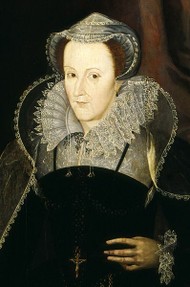 By 1565, Elizabeth had made it clear that she would not marry her childhood friend, Robert Dudley. However, that didn’t mean she wanted him to marry anybody. At the same time, she knew her cousin, Mary’s, claim to the English throne was strong. If Elizabeth died without issue, which was likely, Mary, Queen of Scots would become the next Queen of England. If that was to happen, Elizabeth wanted a King Consort who would have England’s best interests at heart. That was Robert Dudley.
By 1565, Elizabeth had made it clear that she would not marry her childhood friend, Robert Dudley. However, that didn’t mean she wanted him to marry anybody. At the same time, she knew her cousin, Mary’s, claim to the English throne was strong. If Elizabeth died without issue, which was likely, Mary, Queen of Scots would become the next Queen of England. If that was to happen, Elizabeth wanted a King Consort who would have England’s best interests at heart. That was Robert Dudley.
Elizabeth trusted Robert and was willing to see the throne pass to her cousin as long as he was her husband. Robert wasn’t happy with this but at first Mary seemed open to the option. However, she turned him down in the end in favour of marrying Henry Stuart, Lord Darnley. Robert was a Protestant who was rumoured to have killed his own wife and also a lover of Elizabeth. Mary didn’t want to be connected to any of that.
Henry Stuart Appears at the Edinburgh Court
Mary met Henry at court in Edinburgh and it seemed that they were perfect for each other. Lord Darnley was young and loved music, dancing and hunting; all passions of Mary. He could also strengthen Mary’s claim for the English throne. He was also Margaret Tudor’s grandson through Margaret’s second marriage to Archibald Douglas. Henry Stuart had been born in England as Margaret had fled there just before his mother’s birth.
Elizabeth wasn’t happy about the marriage. She was threatened by their joint claim to the throne. She knew any child between them would have a very strong claim—incidentally, their only son, James VI of Scotland, became James I of England after Elizabeth’s death in 1603. The marriage went ahead without Elizabeth’s permission. Since Henry was her cousin and an English noble, Elizabeth believed that her permission should have been gained first.
They had a Catholic ceremony in the Palace of Holyroodhouse by Bishop of Brechin. A major problem for the Scottish people was the fact that both were Catholics. Scotland was a Protestant country and the people didn’t want a war to happen. This led to a rebellion, led by Mary’s half-brother, the Earl of Moray, along with other Protestant lords. However, Mary gained support and the rebellion never led to a war. Moray fled to England and Mary focused on bring more Catholics into her government.
How Much Do You Know About Mary, Queen of Scots?
 |  |  |
| Mary Queen of Scots | Mary Queen of Scots: The True Life of... | Rival Queens: The Betrayal of Mary, Q... |
Mary, Queen of Scots Falls Out of Love with Lord Darnley
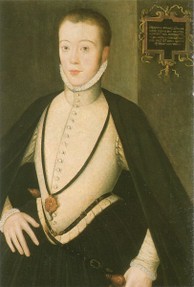 Darnley soon became arrogant. He wanted more power and titles. One of those was the Crown Matrimonial so he would become the co-sovereign of Scotland. If Mary died, this would have led to him becoming King of Scotland in his own right. It wasn’t something the country wanted and definitely wasn’t something Mary wanted. She refused the Crown Matrimonial and the marriage became strained.
Darnley soon became arrogant. He wanted more power and titles. One of those was the Crown Matrimonial so he would become the co-sovereign of Scotland. If Mary died, this would have led to him becoming King of Scotland in his own right. It wasn’t something the country wanted and definitely wasn’t something Mary wanted. She refused the Crown Matrimonial and the marriage became strained.
Around the same time, Darnley became jealous and suspicious of Mary’s relationship with her private secretary, David Rizzio. He was a Catholic and there were rumours that he was the father of Mary’s child. Darnley conspired with the Protestant lords and nobles against Mary and had him murdered. This was in front of Mary, who was pregnant at the time, while at a dinner party. Mary didn’t do anything against her husband though and it led to them escaping from Holyrood Palace to Dunbar Castle until March 18, 1566.
James Stuart was born June 19 of that year but there was no reconciliation for his parents. During October 1566, Mary stayed at Jedburgh on the Scottish Borders and regularly made visits to the Earl of Bothwell. This journey would have taken four hours by horseback each way and became evidence later that Mary and the Earl were lovers. However, Mary was accompanied by guards and councillors for each of the journeys and Bothwell was ill from wounds he had sustained during a skirmish with the border reivers.
After returning, Mary became violently ill. She lost her speech and sight, was unconscious for regular periods and suffered severe vomiting and convulsions. Everyone believed the worst but she made a recovery from October 25. There is still no definite diagnoses. Suspicions include a gastric ulcer haemorrhaging, prophyria or simply mental stress and exhaustion.
The History of Scotland: Mary, Queen of Scots and James VI
Did Mary, Queen of Scots Murder Lord Darnley?
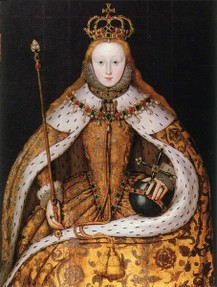 By the end of November in 1566, the marriage between Lord Darnley and Mary was no longer reconcilable. Mary knew this and she met with her nobles to discuss her options. Divorce was placed on the table but it didn’t happen. It is likely that the lords agreed they would find another way to remove Darnley so he didn’t cause any further problems.
By the end of November in 1566, the marriage between Lord Darnley and Mary was no longer reconcilable. Mary knew this and she met with her nobles to discuss her options. Divorce was placed on the table but it didn’t happen. It is likely that the lords agreed they would find another way to remove Darnley so he didn’t cause any further problems.
It is clear that Darnley knew something was being planned. After James Stuart’s baptism in December 1566, he went to his father’s estates in Glasgow. He was ill for some weeks though and poisoning was one of the suspected reasons; others included syphilis and smallpox. In the early stages of the New Year, Mary convinced her husband to return and he could recover from his illness in Kirk o’ Field.
Mary visited her husband on February 9, 1567 before attending a wedding of Bastian Pagez, a member of her household. Coincidentally, that night, there was an explosion at Kirk o’ Field. Darnley was found the next morning in the garden, dead. He had apparently been smothered although there were no marks of violence or strangulation. Mary was one of those suspected of the murder, along with the Earl of Bothwell and Moray. Elizabeth I informed her cousin of the rumours surrounding the murder, clearly stating that even if Mary didn’t do it, the rumours believed that she ordered for it to happen.
In the end, the suspicion fell on Bothwell. He was tried before the Estate of Parliament but Darnley’s father, Earl of Lennox, was not allowed the extra time to gather the evidence. In the end, Bothwell had to be acquitted because there wasn’t enough evidence. The trial lasted all of seven hours. Bothwell moved onto his aim to marry the now widowed Queen of Scotland and he quickly gained the support of 24 lords and bishops within the next week.
The ending wasn't great for Mary either. A few years later she would find herself having to abdicate her throne for her son and flee to England for protection. Mary, Queen of Scots was executed on February 8, 1587, after Elizabeth signed her death warrant. It was something Elizabeth reportedly never ordered, though, and she regretted the action as soon as she heard it was carried out. James VI became King of Scotland and never met his mother or father.
The only benefit from the marriage to Lord Darnley seems to be the birth of James Stuart. By both parents being descendants of Margaret Tudor, James’ claim to the English throne was extremely strong. Despite Henry VIII forbidding his Scottish family from taking over the throne, James VI of Scotland did go on to become James I of England and Ireland. His coronation joined the two warring countries and gradually led to Great Britain as it is known today.
You might also like
Eyam: The Courageous Plague Village in DerbyshireIn 1666, around 800 people chose to sacrifice themselves, in order to save th...
How Scotland was Forced into Union with EnglandOn May Day 1707, a group of politicians huddled in secret to sign the Act of ...
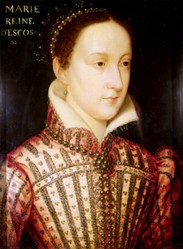

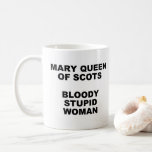
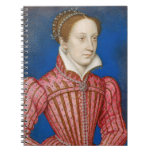


 Alternate History: What If Mary I Had a Child?on 01/26/2015
Alternate History: What If Mary I Had a Child?on 01/26/2015
 Francis II of France Dies: Mary, Queen of Scots Returns Homeon 12/05/2014
Francis II of France Dies: Mary, Queen of Scots Returns Homeon 12/05/2014
 Does Writedge Pay? Payment Proofon 12/03/2014
Does Writedge Pay? Payment Proofon 12/03/2014
 Alternate History: What If Lady Jane Grey Was Not Deposed?on 11/11/2014
Alternate History: What If Lady Jane Grey Was Not Deposed?on 11/11/2014
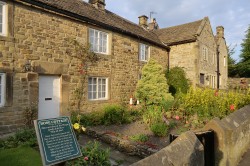
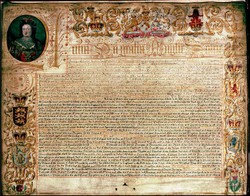
Comments
Thanks, Katie. My interest in Mary, Queen of Scots has only been recent and I've really started to find her fascinating. There's an exhibition in Edinburgh at the moment and I'll be going at the end of August so there will be plenty more to come.
Very interesting article, well done!